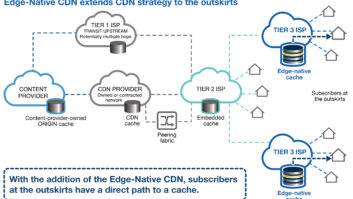The sports video market has always been fertile ground for adopting new technologies and services. In fact, no time has been as disruptive as the present, with broadcasters and media companies grappling with the transition to IP and an increasingly demanding, on-the-go consumer. TV is also making a big push into the ‘second-screen’, mobile, which brings with it a variety of delivery complexities, quality challenges, and the need for new business models to ensure digital content monetisation.
As we head into 2020 and a summer of exciting sporting events, the industry is carefully planning for content preparation and ingest. Given previous experiences surrounding latency, inconsistent buffering and stream delays, most will be keen to avoid a repeat of the 2018 World Cup. Media measurement company Conviva recorded 75.8 million attempts to stream the quarterfinal games, but over 15 per cent of those attempts failed – that’s more than 11 million unsuccessful attempts. Viewers also experienced delays when watching games via a live OTT service, with many pub punters celebrating 20 or more seconds earlier than viewers at home. Every media company is well aware that the viewer is at the centre of any successful business model, and that they won’t accept anything less than a flawless viewing experience.
The focus for most media companies will be on delivering consistent, broadcast-quality video and reducing latency. The challenge is that IP network bottlenecks and delays, client and player latencies, and the “retry model” for IP delivery all create a less-than-stellar experience. Content shouldn’t pop around in different bitrates, looking good sometimes and bad at others. And when viewers want to change channels, they should be able to do so instantly and without waiting for a stream to buffer. But fixing this isn’t as easy as it sounds.
One solution is to deploy a hybrid CDN, which falls somewhere between using a completely outsourced CDN and having a fully owned-and-operated CDN. Service improvement is achieved by being able to control the end-to-end delivery service from content origination to content caching and session control. By managing the storage, transcoding, origin and cache, with a managed network connection in between, broadcasters can benefit from using CMAF – from packaging at the edge, from controlling what is cached where, and from directly managing the interaction between the consumer’s player and the cache – to achieve lower latency and cross-device synchronisation. This enables broadcasters to achieve OTA-quality parity for OTT services and directly control the customer experience of the end-to-end OTT service.
Hybrid CDN is also a smart choice that works in concert with last-mile broadband delivery networks. Placing private CDN servers inside internet service providers’ broadband and mobile networks to overcome peering point contention and serve content from dedicated servers as close as possible to consumers will be a defining characteristic of OTT services. This will deliver a better QoE for OTT consumers and relieve bottlenecks in internet service providers’ networks – a win-win-win for OTT service providers, broadband operators and consumers.
Broadcasters and operators also need to think about how their live content is stored for ingest and distribution. The emergence of object storage as a mechanism to store digital video has modernised the way video content is stored and distributed. Object storage allows for an asset to be stored as a “data blob” in a potentially large namespace, whereas legacy systems use a traditional POSIX file-system architecture that stores video assets as files within a directory tree. An object can be of any length, and typically is stored in a “flat” namespace with all other objects, only referenced by its unique name.
In the case of live-linear IPTV, these video segments must be stored in real time as a live broadcast is being captured and transcoded. Each video segment is committed to the object storage system immediately. Various clients can then reference these objects as soon as they’re created to stream a live broadcast. Once the objects are created, they can remain in the object storage system as long as there is capacity. This enables various clients to view the live TV stream at any point in the past simply by referencing video segment objects that were recorded earlier and streaming them in the correct order. Multiple clients can therefore access different compression bitrate profiles of broadcast streams either live or at any point in the past by referencing different objects within the object storage system.
With only a few months remaining until summer 2020, the impact of these emerging trends will soon be felt industry wide. Higher-resolution formats, faster streams, more content, and more viewers will push broadcasters and operators to their limits by testing their bandwidth capabilities, their latency streams, and their overall QoE. One thing remains certain: industry players will continue to innovate their products and services to deliver the best QoE to viewers and accommodate the surge in sports fans subscribing to more services in their quest for the best content. That, combined with next year’s major sporting events, means 2020 will no doubt be an exciting year!







